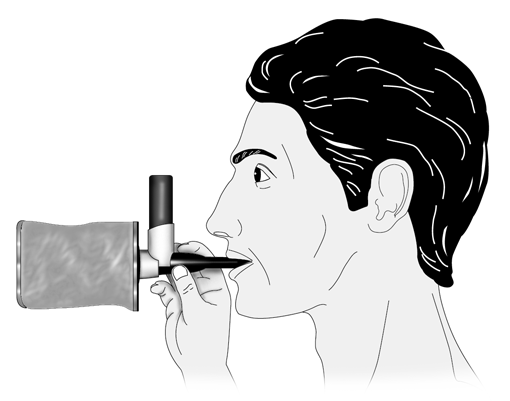How to Use Spacers
If you have difficulty using metered-dose inhalers (MDIs), spacers (also known as holding chambers or reservoirs) have been devised to eliminate the problem of hand-breath coordination, improve the delivery of medication and reduce throat irritation and/or fungal growth in the upper airway.
All spacers receive the medication from the MDI and briefly hold it until you begin to inhale. Therefore it is not necessary to coordinate precisely the release of medication with inhalation. The spacer also allows for the medicated mist to decrease its speed of flow. As it is temporarily suspended in the holding chamber, it can be inhaled at a slower rate, leading to more complete distribution within the lungs.

Even if you are familiar with the correct technique of MDI use, you may benefit from a spacer since it can increase the amount of medication deposited into the airways. Used with inhaled corticosteroids, a spacer may decrease the incidence of thrush (yeast infection in the mouth and throat). Spacers also may reduce the bad taste that you experience with MDIs. Adults and most children over 3 years (occasionally younger) of age can become proficient within a week or two of practice using these devices. Two common spacer devices used are the Aerochamber® and the InspirEase® device, both of which have incorporated a monitoring sound to alert you of inefficient inspiratory flow. The choice of spacer is usually based on efficacy of aerosol delivery, how well the spacer fits the inhaler, its portability, convenience and price. Your asthma specialists should review the use of the spacer device and offer written instructions.